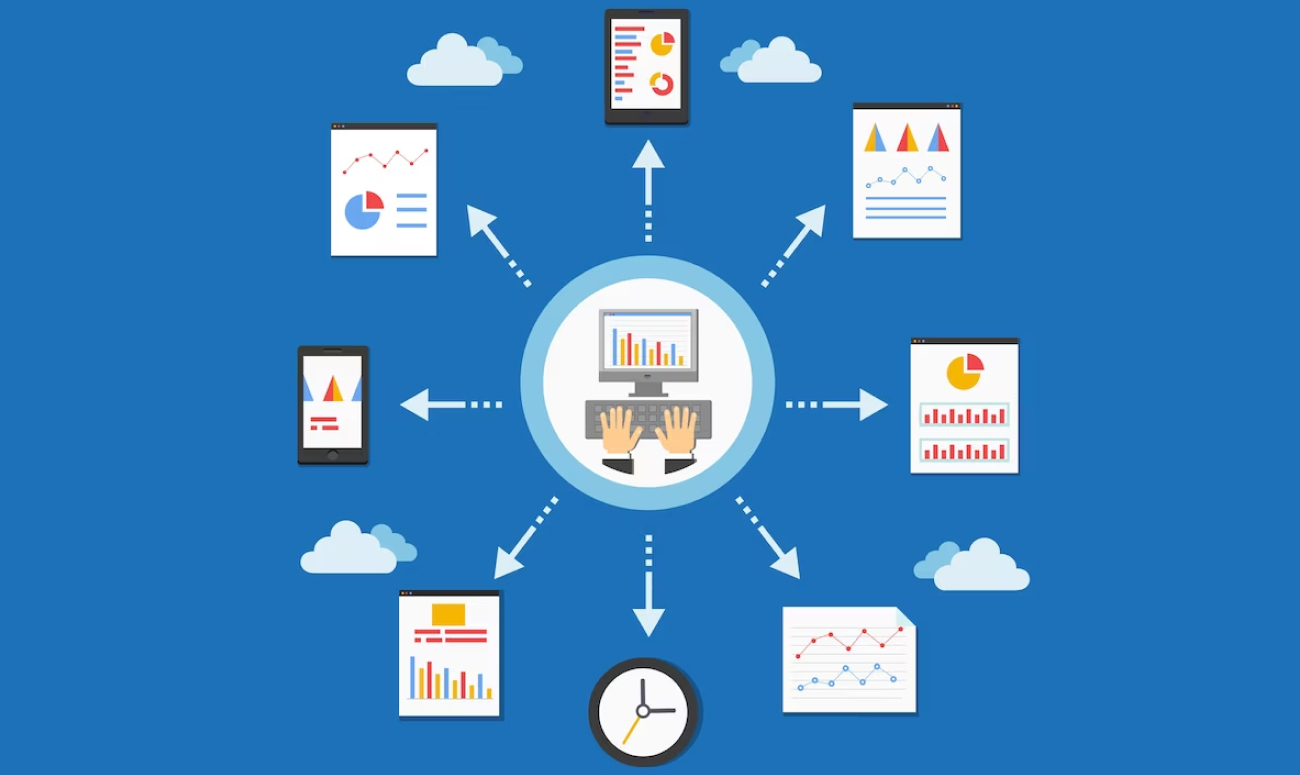Are you looking for ways to ensure your sales pipeline is as efficient and effective as possible? With an optimized sales process, you can close more deals, increase customer satisfaction, and drive revenue growth. Additionally, with effective management of your sales pipeline, you can make intelligent decisions about allocating resources and targeting prospects that will lead to more successful deals. Want to learn how? In this blog post, we’ll provide tips on how to do just that and ensure smoother sailing for your sales process from start to finish. So if you’re ready for sound advice on closing more deals as quickly and effortlessly as possible – keep reading!
Understanding the Sales Pipeline: How to Identify Key Stages

The sales pipeline is a crucial aspect of any business focused on generating revenue. This process involves visualizing the sales cycle from lead generation to closing deals. Every lead moves through different stages in the pipeline, and tracking them is essential to ensure that the sales team is on track to meet targets.
For instance, a company intends to increase its sales by 30% in the coming year. With a sales pipeline, the team can determine how many new deals they need to close each month to reach this target and accordingly prioritize leads in the pipeline. Moreover, by analyzing the pipeline data, the team can identify any gaps or bottlenecks in the sales process, leading to changes and improvements that may improve both team collaboration and sales performance in the future.
By breaking down the sales process into identifiable stages, sales teams can gain valuable insights into their performance and identify areas for improvement. Here are four critical stages in the sales pipeline and some metrics sales professionals used to measure success:
Lead generation
Lead generation is the stage where potential customers first enter the pipeline. Metrics include the number of leads generated, conversion rates into opportunities, and how long it takes to move leads to the next stage.
Qualification and discovery
Once the business identifies the lead as a potential opportunity, the sales team must qualify the lead and uncover its specific needs. Metrics to track might include the number of leads that pass qualification criteria, the average time spent on discovery calls, and the percentage of opportunities disqualified during this stage.
Proposal and negotiation
This stage is where a salesperson presents a proposal to the customer and negotiates the terms of the deal. Metrics include the average length of proposals, win rates of recommendations, and average deal size.
Closing
This is the final stage, where the deal is won or lost. Metrics include the percentage of closed-won opportunities, the average sales cycle length, and the average deal value.
By tracking metrics for each sales pipeline stage, sales managers can identify patterns and areas for improvement. For example, if a sales manager or team needs help with lead generation, they may need to focus on improving their outreach strategy or marketing efforts. On the other hand, if the bottleneck is at the proposal stage, they may need to re-evaluate their proposal process or improve their negotiation skills.

Overall, an effective sales pipeline can provide marketing teams with a roadmap for success and help businesses to increase their sales revenue. By tracking metrics and identifying areas for improvement, sales teams can refine their strategies and ultimately close more deals.
Tips for Effective Sales Pipeline Management
There are key strategies to remember when managing the sales pipeline to maximize sales performance. First, it’s essential to set achievable goals that can be tracked and measured. These goals will give you tangible targets to ensure smoother sailing for the entire sales process from start to finish.
Here are some tips on how to make sure you’re getting the most out of your process:
How to Move Sales Leads through the Sales Pipeline: Strategies for Each Stage
Moving leads through the sales pipeline is crucial to every successful sales team’s operations. However, while some prospects move effortlessly through the stages, others may need help progressing beyond a specific point. To avoid this, it is essential to understand why leads get stuck in particular steps and apply practical strategies to move them through the pipeline.
Target leads who are the right fit for your services.
One of the primary reasons why leads get stuck is that they must be the right fit for your product or service. Focusing on reaching the right people from the outset is crucial to avoid this. In this stage, thorough research and well-defined buyer personas can be instrumental in identifying the type of leads most likely to convert.
Use resources and engaging content to nurture leads.
Another reason why leads get stuck is that they need more nurturing to move them to the next stage. Providing helpful resources and engaging content can effectively build relationships with your leads and encourage them along the sales journey. Additionally, regular and personalized communication can keep them engaged and connected with your brand.
Track leads at each stage: Best or dead leads?
Identifying the different categories of leads and nurturing the best prospects is essential. For that, you need to track the sales funnel effectively. The best leads are those that have shown an interest in your company’s product or service and have demonstrated a capability to purchase it. Nurture these leads with resources such as engaging content, personalized communication, and targeted outreach campaigns. On the other hand, dead deals show little or no potential for conversion and should be dropped from the sales pipeline.
When tracking leads, it is essential to consider more than just basic metrics such as deal size or win rate. By understanding the stages of your sales pipeline in greater detail, you can gain insights into where your best leads originate from and develop strategies to ensure they progress through each stage smoothly. Additionally, vital actions should be taken within each step to maximize conversion rates – for example, ensuring discovery calls are conducted promptly, and proposals contain detailed information about your services/products.
By taking these steps and focusing on high-quality leads while dropping dead deals early on, businesses can dramatically improve their sales performance while minimizing wasted resources. As such, accurately tracking leads at each stage is essential to creating a successful sales pipeline that maximizes returns.
Strategies for Each Stage

To help move leads through the sales pipeline, applying a range of strategies tailored to each stage of the process is essential. Personalization is critical at the beginning of the pipeline, as it enables you to tailor your approach and communication to individual leads’ specific needs and preferences. Segmentation can help to group similar leads, allowing you to target them more effectively with email campaigns and other marketing materials.
Read more to know more about personalization through social media channels – The Power Of Personalization through CRM And Social Media.
As leads progress through the pipeline, providing guidance and support becomes increasingly important for the sales department and management. Sales teams should give the leads helpful resources, such as case studies and whitepapers, to help them make educated decisions. At the latter stages of the pipeline, negotiation skills come into play as salespeople must be able to effectively discuss deals and close sales, mainly so they seek to create a sense of urgency around making a purchase.
Depending on the situation, this may involve offering incentives to repeat customers or using scarcity tactics to create a sense of urgency and motivate the lead to take action and purchase.
Finally, it is essential to build relationships with leads throughout the pipeline. This not only helps to move them through the pipeline faster but also encourages loyalty and repeat purchases. Use personalized emails or one-on-one calls to create strong connections with your leads that will last long after the sale.
To know which strategies are working best, tracking and measuring key metrics that allow for meaningful analysis and evaluation of your sales process is essential. Relevant metrics include lead-to-customer conversion rates, sales velocity, and customer lifetime value. Regularly tracking and analyzing these metrics allows you to identify improvement areas and take action to optimize your sales process further.
In conclusion, moving leads through the sales pipeline requires a strategic and thoughtful approach that addresses the unique needs of each stage of the process. By applying effective strategies tailored to the specific needs of your leads, you can create a more efficient and effective sales process that drives accurate results and yields significant sales growth.
The Role of CRM in Sales Pipeline Management

Customer Relationship Management (CRM) software is a critical tool businesses use in their sales pipeline management process. The sales pipeline is a crucial element in the sales process, which outlines each stage of the sales cycle, from initial contact with a lead to the final sale.
By using a CRM system, businesses can track leads, manage their interactions with prospects, and measure the success of their sales strategies.
A few key features of CRM systems that are beneficial for managing your sales pipeline include:
– Reporting and analytics that provide insights into how well your sales process is performing;
– Segmentation tools that allow you to target leads based on their behavior and preferences;
– Automated workflows that streamline lead nurturing, customer onboarding, and post-sale follow-ups. It helps teams to focus on other crucial tasks through workflow automation by automating repetitive administrative tasks. For that, Effective all-in-one CRM software is the ideal software. As it manages routine work, it also handles sales and marketing tasks. EQUP is an example of such exceptional software.
Through these features and more, CRM systems enable businesses to create a comprehensive view of each lead’s journey through the sales pipeline, allowing sales teams to improve their performance and drive more efficient and effective sales results.
With the right sales CRM system in place, businesses can maximize their sales pipeline management capabilities and unlock more significant levels of success.
Streamlining Sales Processes from Start to Finish

CRM software helps businesses streamline the entire sales process from start to finish, providing critical data insights used to manage and boost sales.
One of the primary advantages of CRM software in sales pipeline management is that it enables businesses to identify, categorize, and prioritize leads according to their stage in the sales cycle. From there, sales reps can tailor their approach to meet individual leads’ needs, increasing the likelihood of a sale.
For instance, in the initial stage of the sales cycle, where a lead is uncovered, the sales rep seeks to gather as much information from the prospect as possible, perhaps through an initial email or phone call. CRM software is to track the response rates of these initial outreach efforts and provides data on open rates, click-through rates, and conversion rates, all of which are critical in understanding what’s working and what isn’t. From there, businesses can adjust and optimize their outreach methods in real-time, ensuring that their sales efforts are efficient and effective.
As a business progresses through the sales process, CRM software can provide valuable insights into the health of the sales pipeline. For instance, companies can track metrics such as the number of deals in each stage, the duration of the sales cycle, and the conversion rates at each stage. Through this data, businesses can understand where their sales process is working well, where there is room for improvement, and which areas require the most resources and attention.
Moreover, CRM software can provide businesses real-time customer engagement and interaction data, helping them develop more personalized and relevant messaging in their sales efforts. For instance, companies can know their leads better by tracking lead interactions across multiple channels such as email, social media, and phone calls. Companies then segment customers according to their interests and deliver personalized messages to each segment, ultimately boosting the likelihood of conversions and closed deals.
To illustrate the potential revenue growth that can be achieved through using CRM software in the sales pipeline and lead management itself, consider the following example: A business implementing CRM software found that its lead conversion rates increased by 30% within the first quarter of use. As a result, the company was able to close 20% more deals and boost its revenue by 15%. Furthermore, the business reduced its sales cycle duration by 25%, increasing efficiency and reducing costs. Such improvements can profoundly impact a business’s bottom line while providing a more streamlined and effective sales process from start to finish.
In conclusion, using CRM software in sales pipeline management is essential for businesses looking to streamline their sales processes, boost revenue growth, and improve customer retention and engagement. By tracking critical metrics and providing real-time data insights across multiple sales pipelines and the entire sales cycle, businesses can identify areas of improvement, optimize their approach, and achieve greater efficiency and effectiveness in their sales efforts.
Essential Sales Pipeline Metrics: How to Measure Progress and Identify Opportunities

The sales pipeline is a vital component of any business’s sales strategy. It outlines the process of turning prospects into customers and is instrumental in identifying weaknesses and opportunities in the sales process. However, keeping track of the sales pipeline can be challenging, which is why businesses need to measure essential pipeline metrics to evaluate progress and identify opportunities. Here are some important sales pipeline metrics that can help companies to maintain their competitive edge:
Pipeline Velocity
Pipeline Velocity is a crucial metric that helps businesses to understand how quickly the sales pipeline is moving. It is calculated by dividing the number of closed deals by the time it took to generate those deals.
Sales Cycle Length
The sales cycle length refers to the time it takes to convert a prospect into a customer. Tracking this metric can help businesses streamline their sales process and identify areas where they might lose potential customers.
Conversion Rates
Conversion rates refer to the percentage of prospects who move through the sales pipeline and become customers. Tracking conversion rates at each pipeline stage and forecasting sales, can help businesses identify bottlenecks and make necessary adjustments to improve sales.
Deal Size
Deal size or average deal value is a metric that helps businesses understand the value of their sales pipeline. This metric can help identify areas where companies can focus on increasing value or identify potential revenue gaps.
Win Rate
The win rate refers to the percentage of deals closed out of the total number of deals in the sales pipeline. It is an essential metric for analyzing the effectiveness of a sales team and identifying opportunities to improve the sales process.
Measuring these essential sales pipeline metrics can help businesses evaluate their sales team’s performance, improve sales strategies, and identify growth opportunities. These metrics allow businesses to streamline the sales process, increase conversion rates, and ultimately improve their bottom line.
How to Analyze Sales Pipeline Data Through CRM

Sales pipeline data is essential to any business that wants to increase sales and revenue through customer relationship management software (CRM). However, extracting actionable insights from such data is a challenging task, but with the right approach, it is possible to unlock the value in this critical data source.
Extracting Actionable Insights
Here are some tips on how to extract actionable insights from sales pipeline data through sales CRM software:
Set clear goals and criteria: Before analyzing sales pipeline and customer data through CRM, it’s essential to set clear goals and criteria. This will help you identify what you’re looking for and ensure that you can optimize your findings toward achieving specific business objectives and for example, identifying trends in the purchasing habits of your customers or spotting areas where your sales team can better engage with leads.
Identify key metrics to track: One can follow several metrics through CRM software to obtain actionable insights from sales pipeline data. Some of these include the number of sales activities, and deals closed in a specific time frame. Filtering these metrics into smaller subcategories can break the data into more manageable parts, uncover new areas for potential growth, or highlight areas that may require further attention.
Leverage visualization tools: Visualization tools, such as charts, graphs, and dashboards, are significant assets for analyzing sales pipeline data through sales CRM system. With these tools, you can easily display all the data in a visually appealing format highlighting patterns, trends, and potential correlations, making it easier for managers and teams to make informed decisions.

Conduct regular reviews: Analyzing sales pipeline data is not a one-time event. Therefore, companies are encouraged to conduct periodic reviews of their sales data to ensure they capture new insights, optimize target metrics, and take advantage of the latest metrics.
Sales Pipeline Management Best Practices

Sales Pipeline Management is essential for boosting sales and closing more deals for any sales organization. It comprises organizing leads and prospects, tracking progress, and managing sales activities to close deals. However, businesses need to leverage metrics to improve their sales strategies and grow revenue to succeed in Sales Pipeline Management. These metrics help identify potential areas of improvement and track important information and patterns about the sales process. When used correctly, metrics can help sales and marketing teams more to forecast sales, optimize their sales pipeline, and diagnose underlying issues that may hamper performance. By building and operating reliable metrics, businesses can drive their sales performance and achieve better results.
The Importance of Sales Pipeline Optimization
Sales pipeline optimization involves optimizing the process of managing sales leads and prospects. This includes monitoring activity at each sales funnel stage, understanding customer behavior and needs, and leveraging data-driven insights to grow revenue. Additionally, businesses must understand their buyers’ journey and focus on providing quality customer service throughout the process. Therefore, sales pipeline optimization requires an in-depth analysis of all pipeline stages and detailed customer profiles and segmentation. By doing so, businesses can better identify opportunities to improve conversion rates, minimize leakage points in the funnel, and increase sales productivity.
Strategies for Maximizing Efficiency and Productivity

Define your sales process.
The first step to maximizing efficiency and productivity in your sales pipeline is clearly defining your sales process. For that, outline the steps for a deal to be successfully closed. By clearly understanding your sales process, you will be able to identify bottlenecks and areas of improvement more quickly.
Measure key metrics
Once you have defined your sales process, you need to start measuring key metrics to track progress and identify areas of improvement. Some important metrics include the number of new leads generated, the conversion rate of leads to opportunities, the win rate of possibilities, and the average deal size.
Set realistic goals
Setting realistic goals for your sales team to avoid frustration and burnout is essential. Goals should be specific, measurable, achievable, relevant, and time-bound. For example, a plan could be to increase the number of new leads generated by 20% within the next quarter.
Prioritize opportunities
It is essential to prioritize opportunities in your sales pipeline to maximize efficiency. That means working on the deals that are most likely to close and have the highest potential value. By prioritizing options, you can focus your time and energy on the deals that are most likely to result in success.
Provide adequate resources
Another important strategy for maximizing efficiency and productivity is to provide adequate resources for your sales team. That includes ensuring enough staff to cover all aspects of the sales process and that everyone has the necessary tools and training to do their job effectively.
Regularly review progress
Finally, it is vital to regularly review progress to identify areas of improvement and make necessary adjustments. For this, arrange regular meetings with your sales team or conduct periodic audits of your sales pipeline.
Sales Pipeline Management and Lead Nurturing

Lead nurturing involves developing relationships with prospects over time, educating them about your product or service, and eventually converting them into customers. Leads nurturing is becoming challenging as prospects or leads gather more information and make their purchase decisions at different stages of the sales funnel. To ensure these leads don’t slip away, businesses must nurture them throughout the entire sales pipeline. This nurturing includes providing relevant content, engaging with future customers through email campaigns, personalizing customer interactions throughout, and leveraging data-driven insights to identify opportunities for improvement.
That requires an in-depth understanding of customer liking, changing trends, and effective communication strategies. Additionally, businesses need to be able to track every stage and make necessary changes, like removing dead leads and nurturing the best ones.
How to Build Stronger Relationships with Prospects
Building solid relationships with prospects is essential for the success of any business. Here are some tips to help you do just that:
1. Listen – Don’t just talk about your product or service; take the time to listen to what your existing customers and prospects have to say and understand their needs.
2. Personalized support – Tailor your communication to the individual prospect and use their name in conversations.
3. Provide Value – Make sure that what you provide has value to your customer relationships and prospects and meets their needs.
4. Be Responsive – Respond promptly to sales calls and inquiries and proactively provide customer information and or assistance when needed.
5. Follow Up – Keep following up with prospects to stay top of mind and keep them engaged.
By following these tips, you’ll be able to build strong business relationships with with prospects and increase the chances of successfully closing deals.
How to Choose the Right Ones for Your Business
When it comes to sales automation and pipeline management, there are a variety of different tools and strategies that businesses can use. The best one for your business will depend on your organization’s size, industry, goals, and resources available. Before implementing any new system or tool, be sure to assess the needs of your business to find the one that meets your requirements. Make sure the sales CRM platform or tool you select must include the marketing tools(email marketing, marketing automation, and marketing campaigns). Additionally, keep track of how well each system works(lead management, sales management and other business processes) to determine which ones are most successful and identify areas for improvement.
Final Thoughts

In conclusion, managing the sales pipeline has been a popular method for businesses to boost revenue. However, effective management of this process is critical for success. When taking steps to ensure successful deal closing, consider all stakeholders involved, take a different approach when closing each deal, and commit to customizing your strategy through sales pipeline management processes. Remember, having the right customer relationship management (CRM) platform makes it easy to manage your sales pipeline. Click here for the best CRM tools and software for managing your sales pipeline and driving continuous revenue growth! With the right tools, you can confidently and efficiently succeed in your deal-closing projects.